Sidebar
Japanese Trains

Above: OM-N02, one of two 253-1000 series train sets, parked on standby at Shin-Tochigi Station on the Tobu Nikko Line in 2024. The JR East 253 series of express trains were constructed in 1991, and are best known for their service as the Narita Express between 1991 and 2010. From 2009, all 253s were gradually replaced with E259s. Two of the retired 253s were refurbished as the 253-1000 series, repainted, and moved to the Tobu Nikko and Kinugawa lines to serve as Limited Express liners from 2011 to the present day. 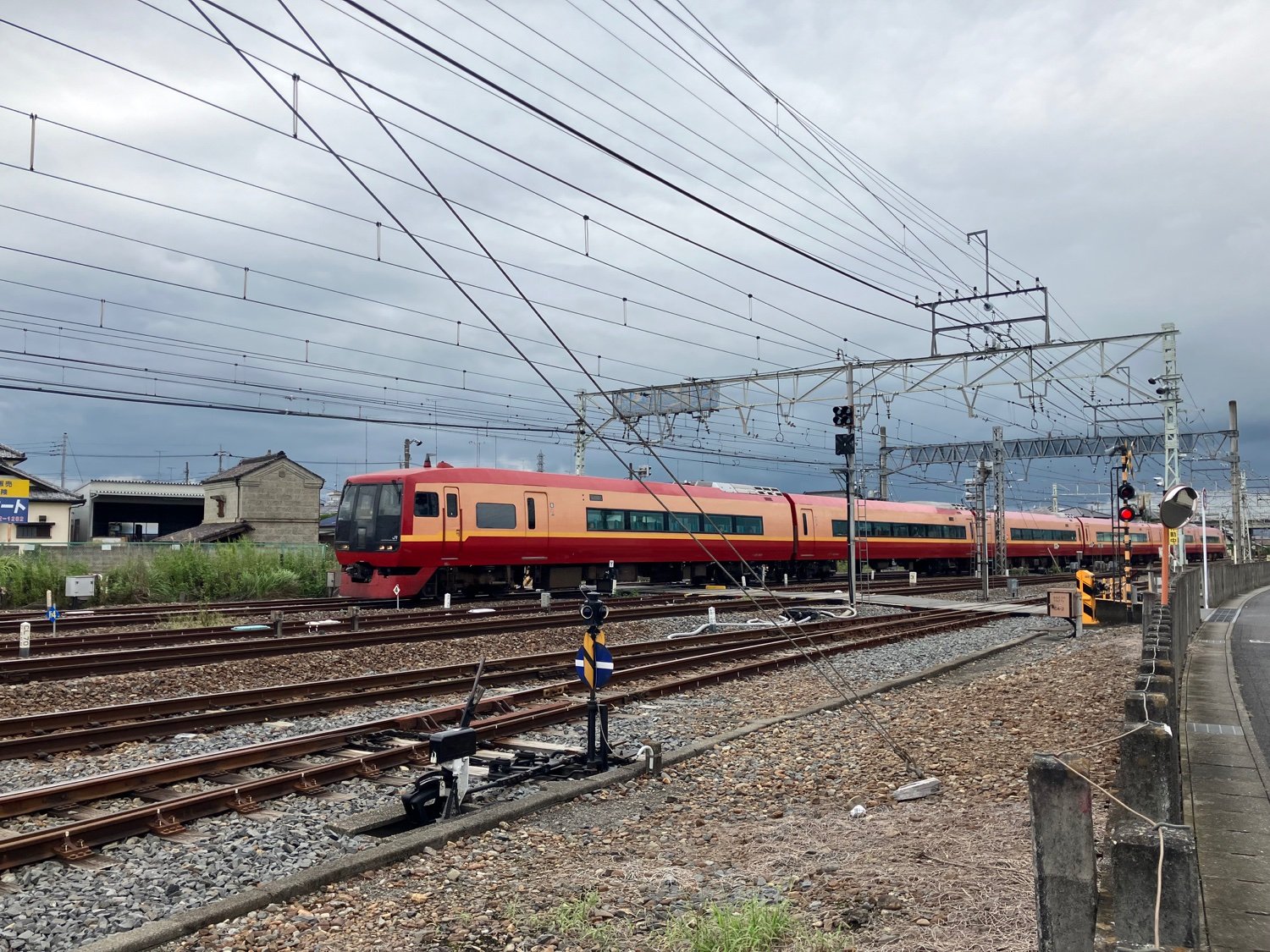 OM-N02 speeding towards Tokyo, just outside of Shin-Tochigi Station. The two trains are a rare sight to see in motion. They run from Shinjuku Station to Tobu-Nikko Station and Kinugawa-Onsen Station, respectively. They were refurbished to have more passenger seating and more windows per car. The Green Cars, which served as business class seating on the Narita Express, were converted to regular seating. While the trains used to have a bright red and white livery, they now have a moodier color scheme with darker reds and other colors that represent the shrines and flora along those two lines. The trains still retain the unique air horn siren that is ubiquitous on the Narita Express (sound on):  A 253-1000 passing through Kassemba Station on its way to Tochigi Station. The 253-1000s replaced the older 189 series & 485 series trains that had been running the Limited Express service on those lines (more about those bad boys another time). The Tobu 100 series "Spacia" trains are now the only other model on those lines. Although the 253-1000s began service in June 2011, they were suppose to start running earlier in the year. Their inaugural runs were postponed due to power outages caused by the Tohoku Earthquake. The 485s continued to operate on a reduced schedule until full power could be restored to the lines.

Above: The Izukyu 2100 series R-4 "The Black Ship Train" or "Kurofune", in a rare public appearance at Tokyo Station in 2015. The Izukyu 2100 series, also known as the "Resort 21" resort liners, were purpose built to reinvigorate tourism in Shizuoka. All 2100 series sets run on the Izu Kyoku Line. Each train features a different theme, some which feature elaborate interiors. 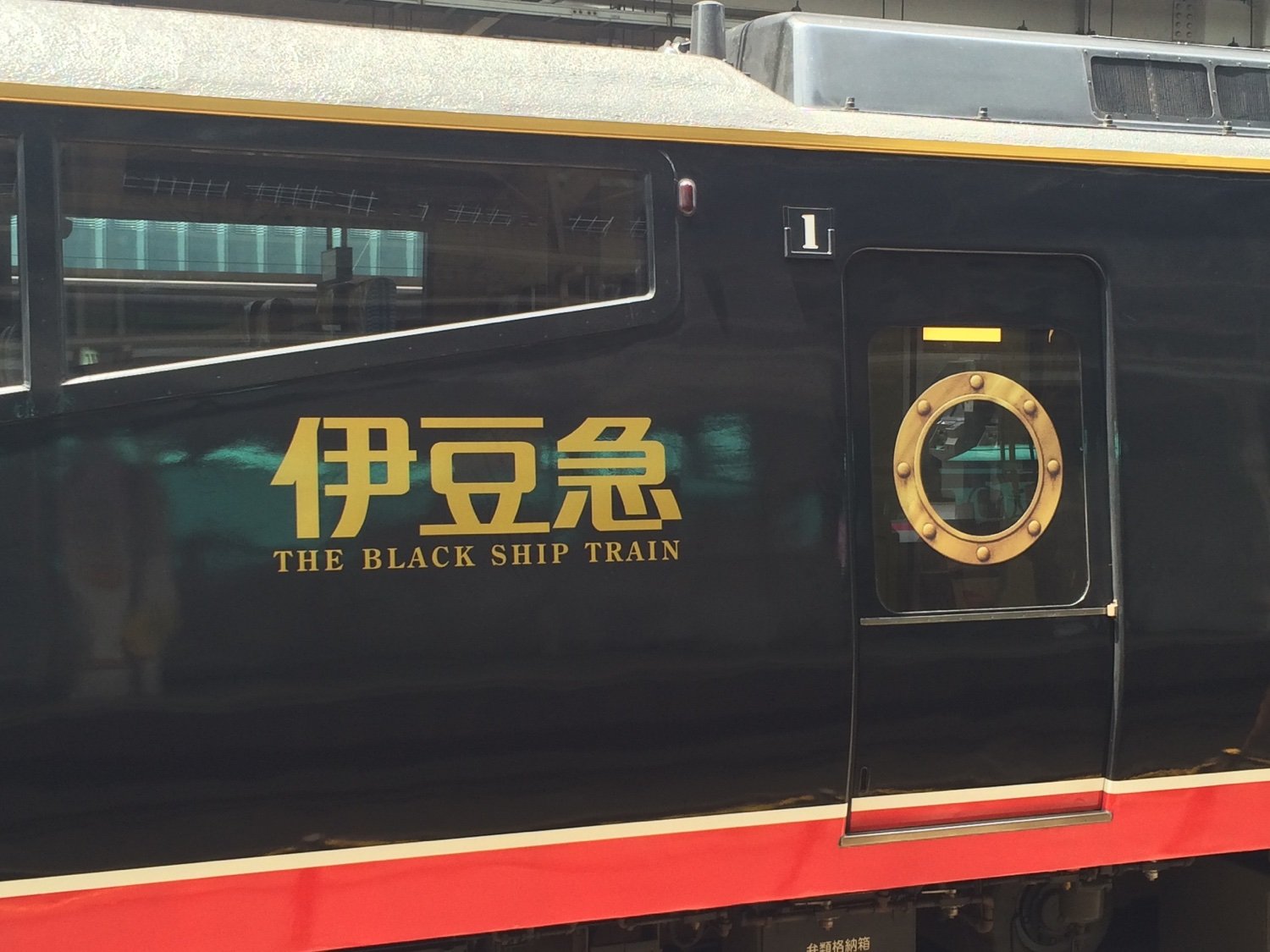 The Black Ship Train was first introduced in 2004, on the 150th anniversary of the opening of Shimoda port in Shimoda City, Shizuoka. The train was themed around the Japanese perception of Western sailing ships of that time. The first 2100 series to be themed as The Black Ship Train was the R-1. In 2006, R-1 was retired from service and R-4 was rethemed The Black Ship Train as its successor. R-4 is in active service to this day.

Toei 6000 series streetcar No. 6152, nicknamed Ichikyu-san (193 or One-eye), being displayed in a preserved state at Arakawa Amusement Park in 2015. This is not a random car that was chosen to be displayed instead of scrapped, 6152 is something of a celebrity in Tokyo. The 6000 series was built between 1947 and 1952. These streetcars were among the first new trains built by Japan after World War II. They were used on tram lines throughout Tokyo, primarily replacing pre-war 3000 series streetcars that were either lost to bombings or overworked until they literally fell apart. The few remaining 3000 series streetcars that still ran were refurbished to resemble the 6000 series and kept in service until repairs became impractical. Almost 300 of the 6000 series were produced and, by 1970, they represented the bulk of Tokyo's commercial streetcars in operation. However, it was in the 1970s that tram lines across the entire city were suddenly abolished. All tram lines were shutdown except for the Arakawa Line in northern Tokyo. Shortly after the shift away from streetcars, the entire 6000 series fleet was pulled from service and scrapped. ...With the exception of 13 cars. These cars were sent to the Arakawa City Depot for storage. One car (6152) was kept in service as a temporary vehicle that could be put on the line when needed. This is how "Ichikyu-san" started its journey. Ichikyu-san was immediately refurbished with newer parts cannibalized from more-recent 6000 series cars that had been dismantled in anticipation of being put back into limited service. However, Ichikyu-san remained in depot. It became a glorified tool shed for the workers there. But in 1986 it was refurbished again with new safety and electronic equipment and put back into full-time service on the Arakawa Line. In 1988 its power system and doors were updated and it was repainted in the original deep green and pale yellow livery it began life with (as seen in the photo) and was used for special events. In 1993, Ichikyu-san was removed from service. Its condition had deteriorated and was given an emergency inspection, repainted in a lighter shade of green, refurbished once again, and sent back into service. In 1994, additional upgrades were made to the car, including giving it a radio with the callsign "ninety-three". This is when car 6152 got its nickname "Ichikyu-san". Kyu-san for its callsign and Ichi for its singular headlight. Literally, it translated to 193, but also means One-eye (Cyclops). The train became a favorite among those that frequented the Arakawa Line. In December 2000 and just six months later in June 2001, Ichikyu-san was involved in two separate collisions with trains on neighboring lines. Both accidents could be traced to the fact that the aging 6000 series streetcar had only one brake and no redundancy system when it could not slow the car fast enough. Additional refurbishments which would now require a new braking system became financially impractical. In December 2001, 6152 was formally retired from service. Due to the unusual popularity that particular car had with the people of Tokyo, public calls for the preservation of Ichikyu-san were answered. Instead of being dismantled, 6152 was scheduled for preservation to the tune of 50 million yen, 20 million yen more than it would have cost to refurbish it so it could continue operating. Because of this, 6152 sat untouched for years as it was put towards the bottom of a list of other trains scheduled for preservation. A public call for support was placed on the internet, and in 2003, Ichikyu-san was put on display at Arakawa Amusement Park. In 2007, the train received extensive repair as it had been rotting in place with no real work done to it since the 1990s. This repair work included restoring the original dark green and pale yellow livery that it was given back in the 1950s. It continued to sit exposed to the elements until 2022. After the entire park has been temporarily closed for remodeling, Ichikyu-san was completely renovated and reintroduced as a restaurant called Cafe 193. It now sits under a canopy and its interior is open to the public for the first time in over 20 years. Today, only six other 6000 series streetcars remain, most are on public display in different areas around Tokyo, and with different liveries. But none of them are as long-served or as loved as Ichikyu-san.

Parent image: East iE parked at Nishi-Funabashi Station in 2017, at the terminal of the Musashino & Keiyo Lines. The JR East E491 series, nicknamed the East iE, is a non-revenue train specially designed to inspect the tracks and electrical connections to the trains. Only one set was made in 2002 to replace multiple older trains built for the same task. It services electrified lines under the authority of JR East (hence the nickname) and is housed in Ibaraki. Floodlights built into a special window on the side of the one of the cars: 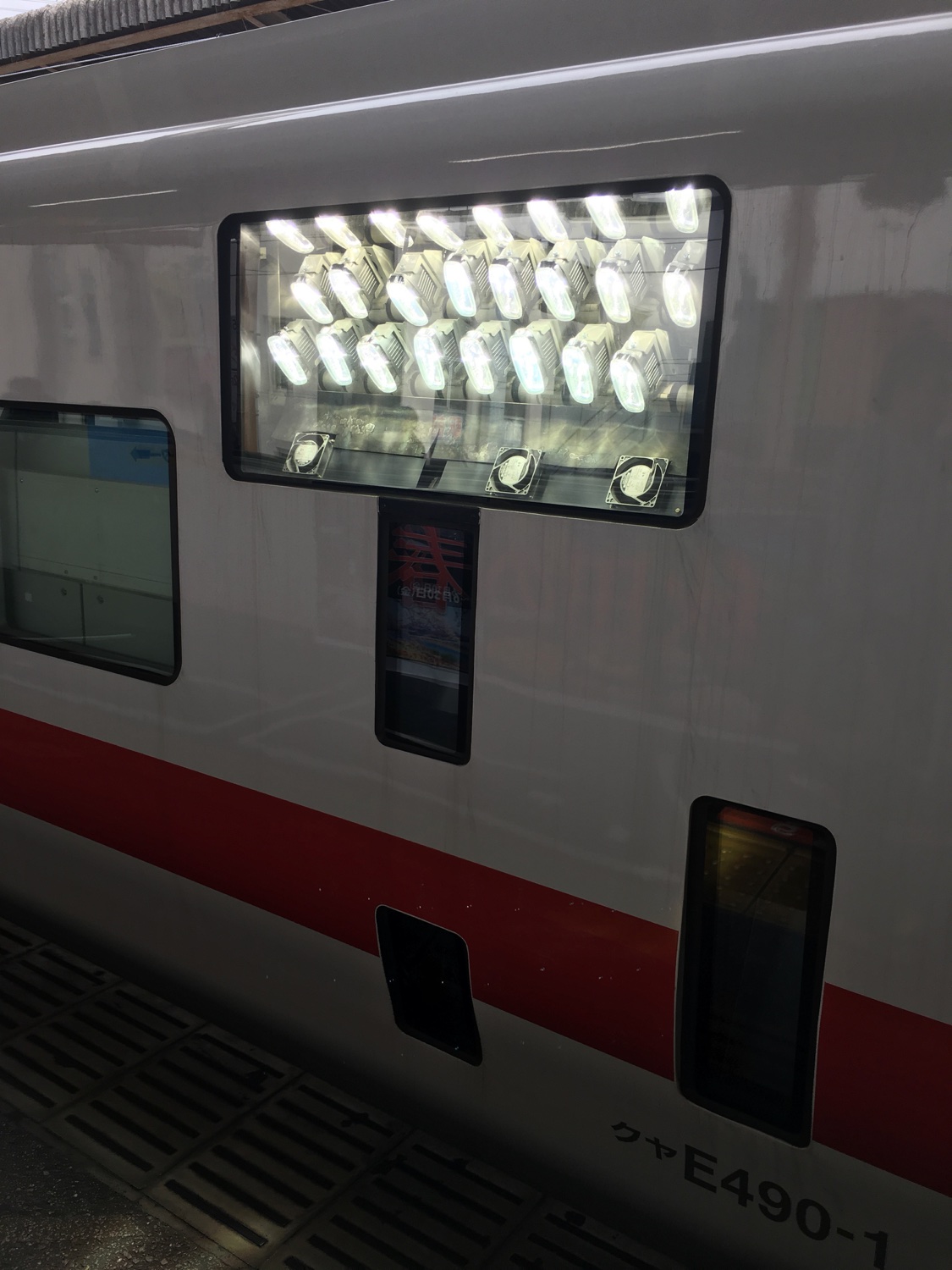 Other cars built for inspection purposes can be coupled with the East iE. For example, cars designed to test tunnel clearances or to carry additional testing equipment. East iE with its lights on: 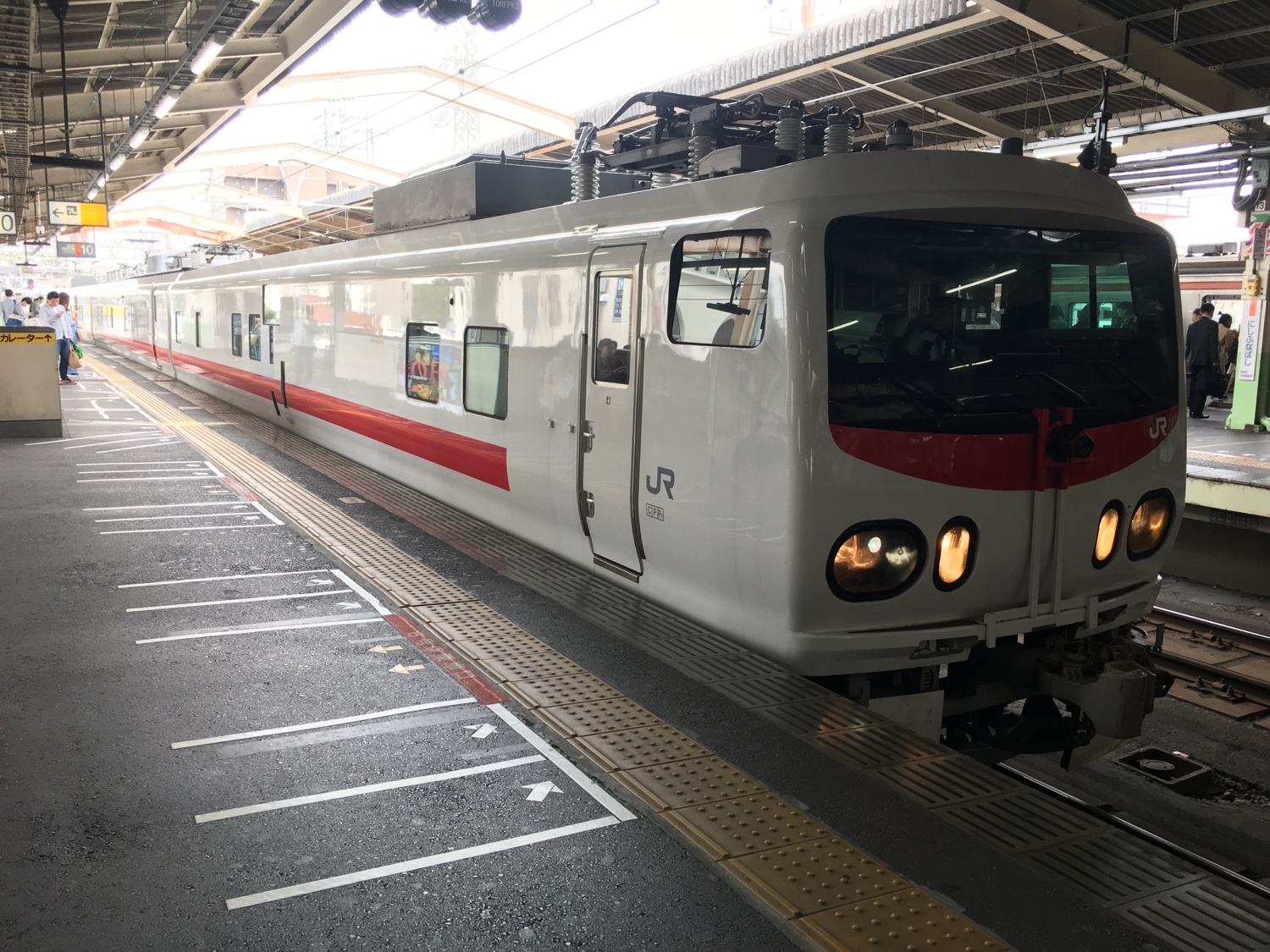 East iE has two sister trains. The East i, which is an inspector train built for the high-speed JR East Shinkansen lines, and the East iD, which is an inspector train built for the non-electrified JR East lines. The D stands for its diesel engine. All three trains are different models built at different times, but have the same white with red band livery. The East iE logo painted on the side of the train: 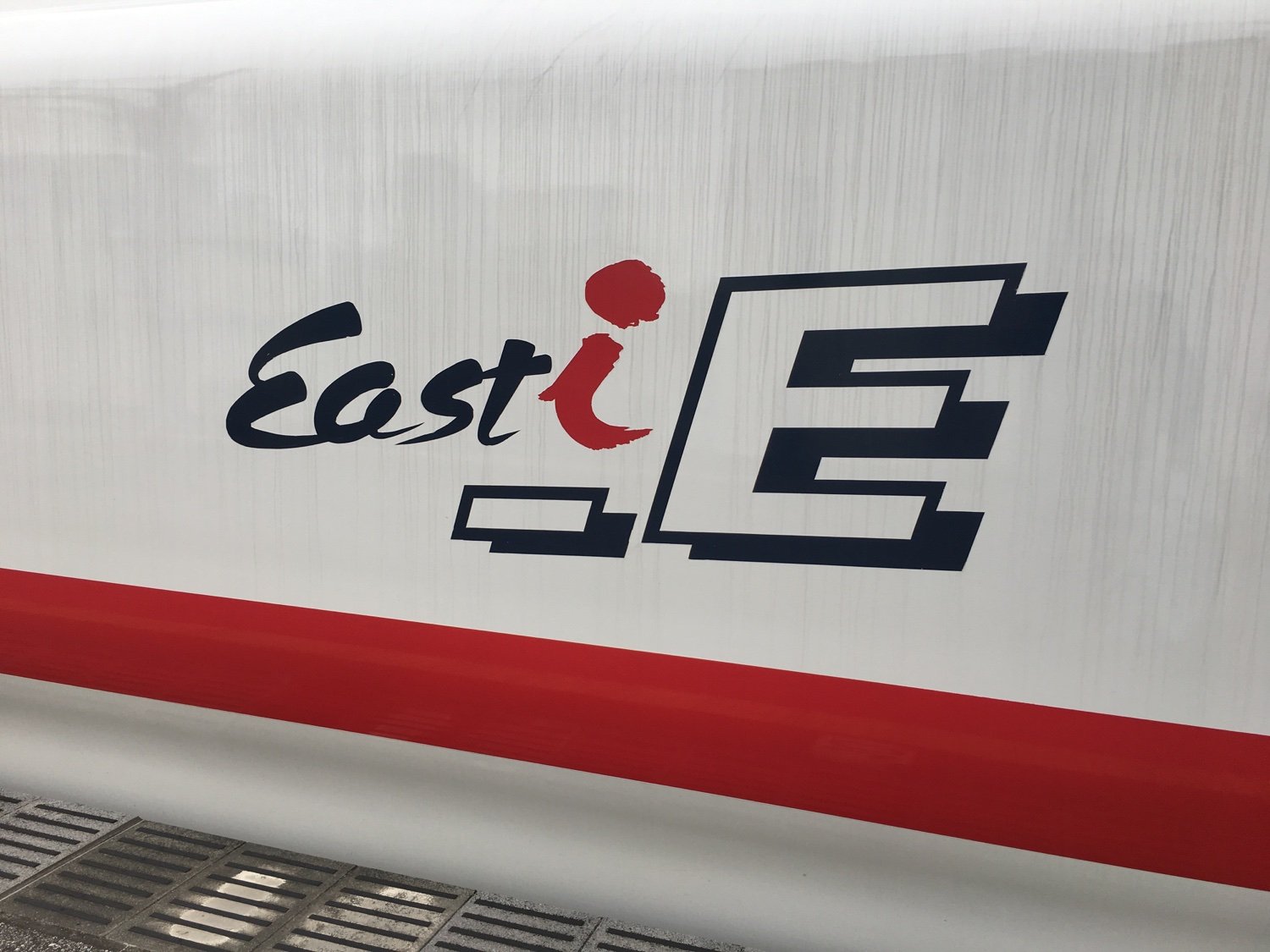

Another of my favorite jet liner-style trains. They were developed to allow the cars to tilt side-to-side while in transit, so that they could lean into corners and take them at higher speeds. The E351 was effectively built to fly on the ground. These trains went into service in 1993 on the Oito Line as the Azusa and on the Chuo Main Line as the Chuo Liner. One year later, they became the Super Azusa on the Oito Line when the tilting feature first went into use. Every set had the same purple band on a white body livery. Two types of sets were built. Four-car sets and eight-car sets. Each set had one conductor cab with a lit plaque on the nose that displayed the service that train was running, and another conductor cab with a retractable gangway that allowed coupling with other E351s. 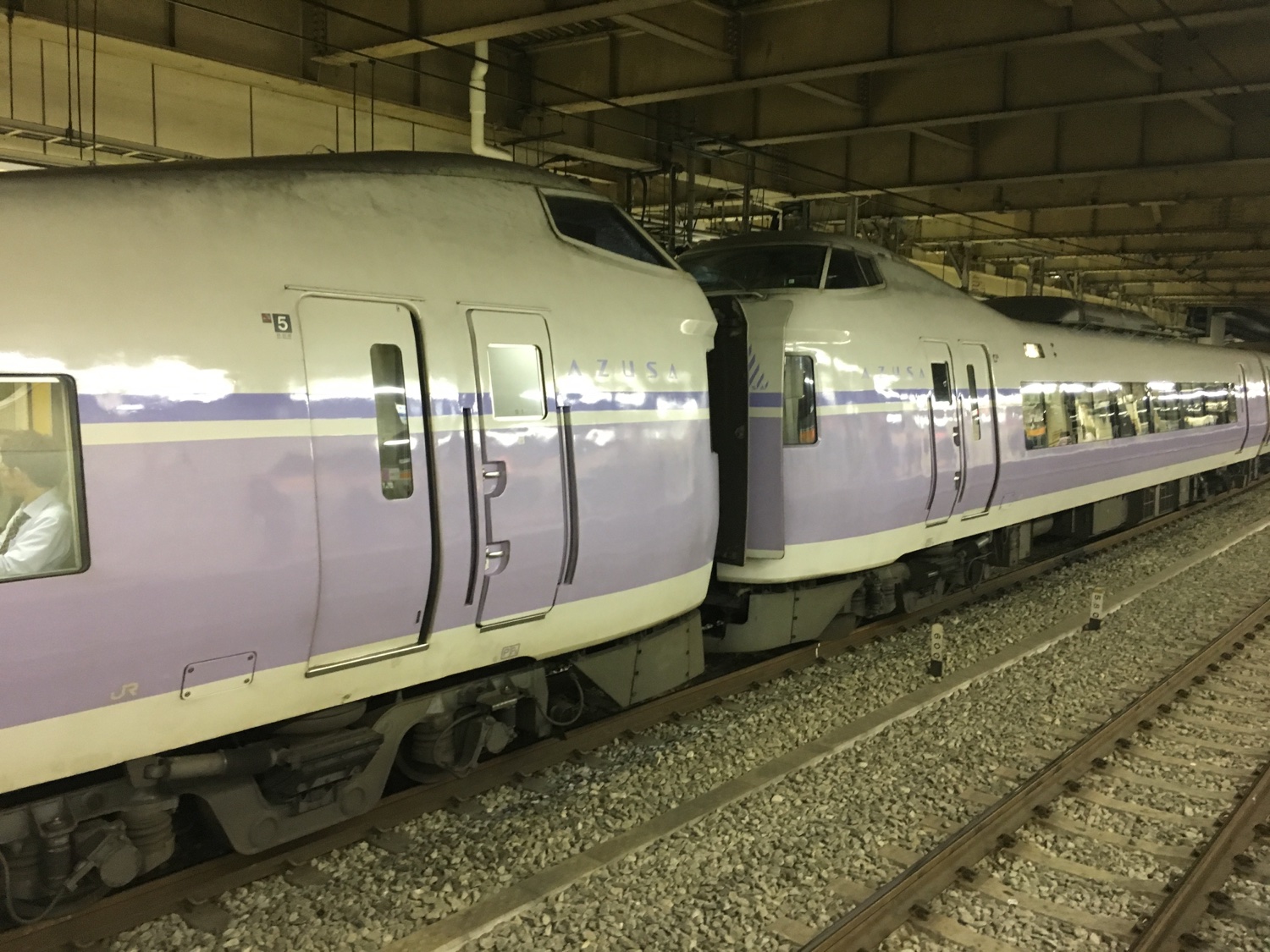 All E351s were retired in 2018 and replaced with E353s. Sadly, none of the E351s were preserved.

A 10-car Odoriko 185-0 Series limited express liner, sitting out of service at Tokyo Station in 2017. The 185 Series looks like a regular liner train, but has the trademark flair of a late 20th century Japanese express train with the distinctive triangular "hood ornament" and the backlit name plaque at both ends of the train. These particular sets were built in 1980 and originally designed to replace the 153 Series on the Izu express service between Tokyo and Shizuoka. In 1981, the Izu express was converted to the Odoriko limited express. These longer A-series sets included Green Car seats - business-class seating with food cart service which require a second ticket to use. Over the years, the sets were refurbished multiple times, The 185-0 Series sets were repainted in a "Shonan" green and yellow color scheme. In 2011, the A-series sets were refurbished one last time and their livery restored to the original diagonal green lines they began service with. As of 2022, all 185 Series trains have been retired from service, with the exception of two refurbished sets which are still in use for special events as touring trains.

(Sorry, maxso216, but this is truly the shortest functional train line in Japan.) The DisneySea Electric Railway is a 2-station line coming in at less than half a kilometer in total length (0.48km). Even at the relaxed 15kph speed of the trains, it only takes two and a half minutes to traverse the entire line. The line runs between the American Waterfront and Port Discovery areas of Tokyo DisneySea. It also has what must be the smallest fleet of rolling stock of any line in Japan; Four two-car sets, of which only two or three sets are in operation at any given time. (Fewer sets than even the Tokyo Disney Resort Line monorail.) Sign over the American Waterfront Station entrance: 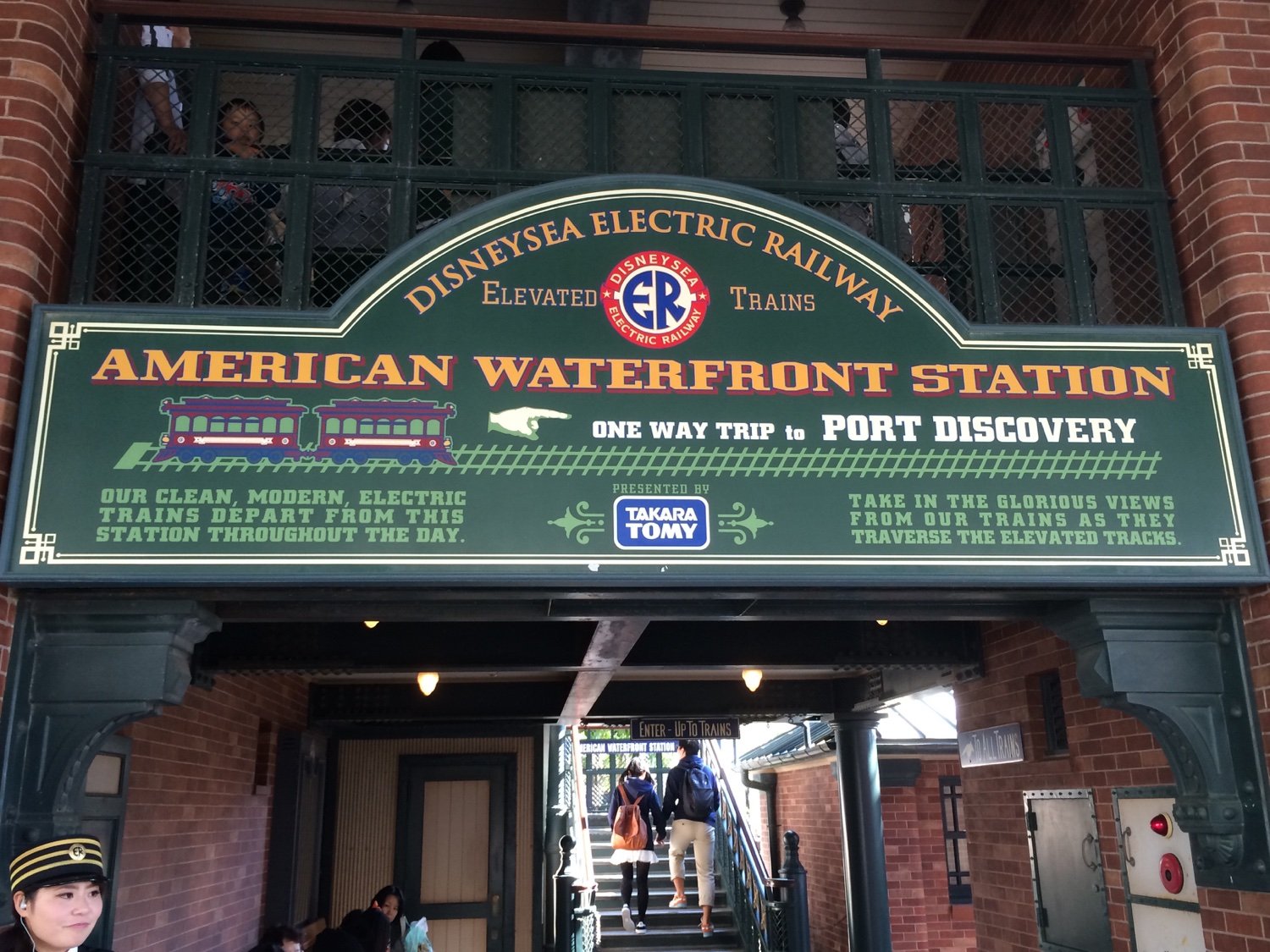 A trivial oddity about the trains is their numbering system. Which initially appears to not be a system at all. All eight cars of the four train sets have a unique (yet random) car number, and the set pairs are never separated from each other. The only discernible pattern with the car numbers is that the final digit in each number seems to represent in which order the sets were commissioned: Set #1) 5591 & 1111 Set #2) 1022 & 2842 Set #3) 1783 & 5593 Set #4) 0214 & 4824 Set #1 traversing the elevated tracks over American Waterfront: 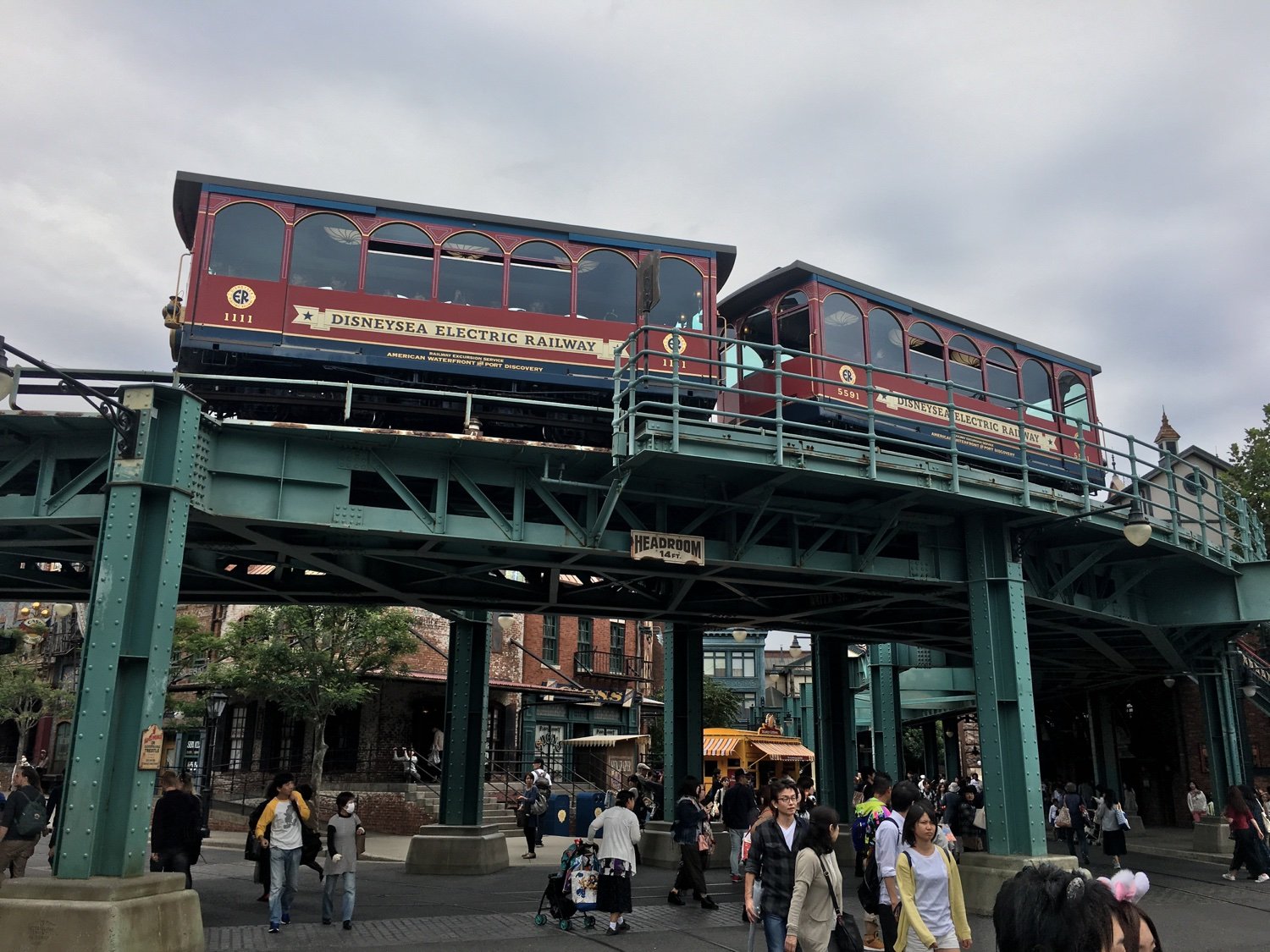 The origin of the train sets are a bit of mystery. Their manufacturer is not known. Since the beginning of operation in 2001, the DisneySea Electric Railway has been sponsored by Takara Tomy - A Japanese toy company that makes functioning toy train sets, including replicas of the trains on the DisneySea Electric Railway. Set #3 passing another train bound for Port Discovery Station. 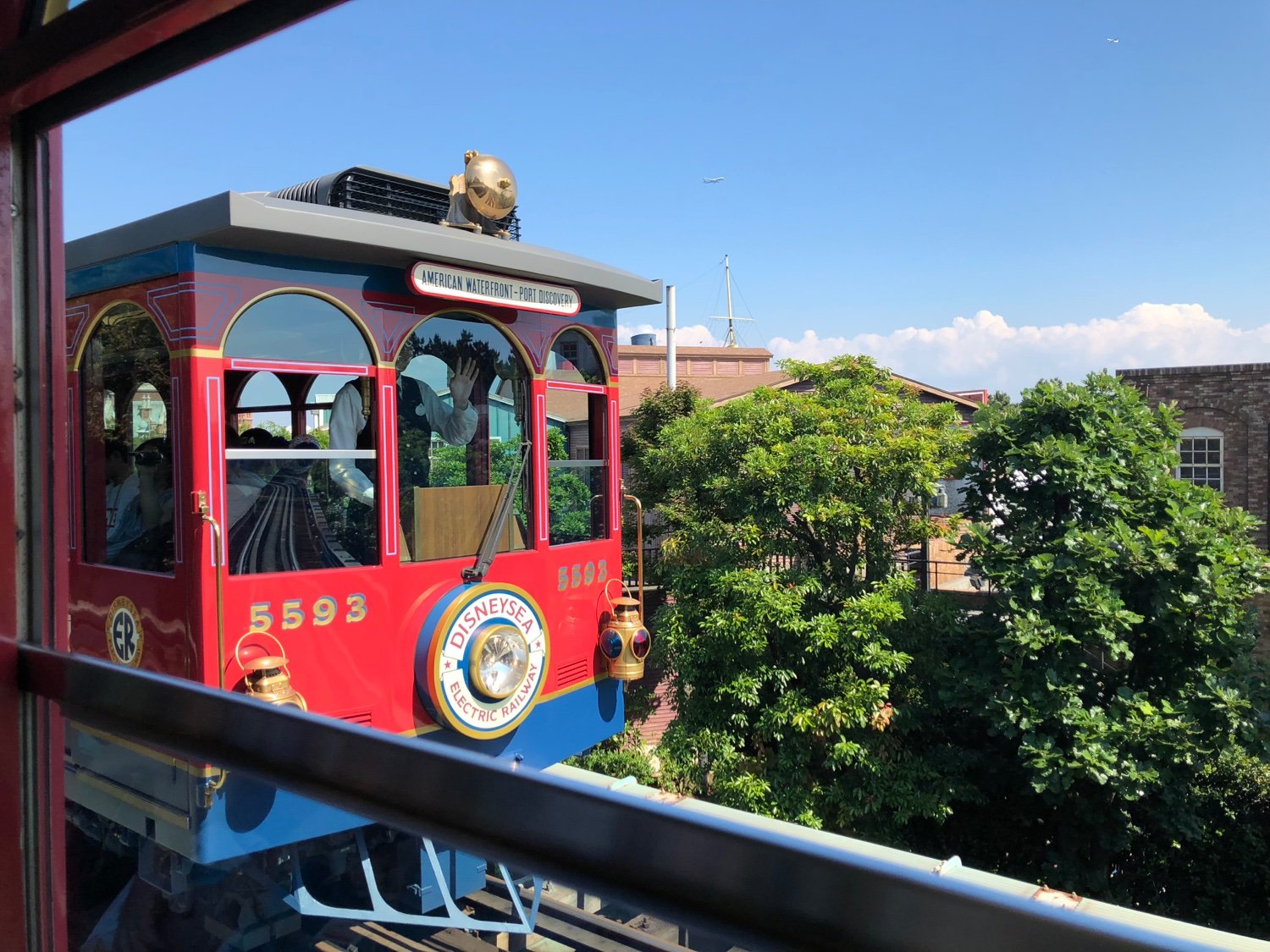 It is possible that the train sets were designed and built by WED themselves as simply another park attraction, or possibly by Kyosan Kogyo Co. Ltd. which manufactured the sets used on the Western River Railroad in Tokyo Disneyland. The DisneySea Electric Railway sets are modeled to resemble some of the elevated streetcars used in what became the New York City subway system at the turn of the 20th century. 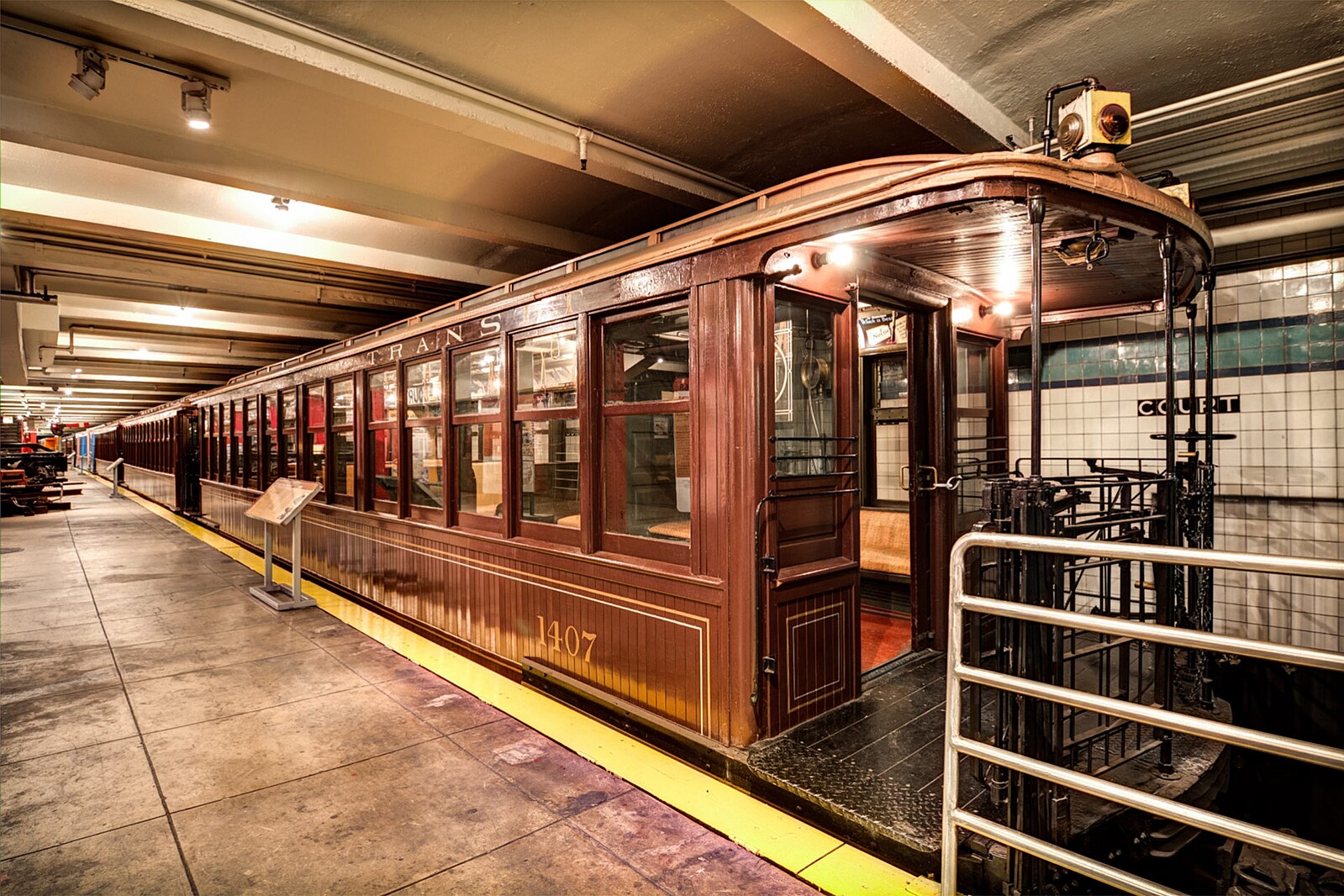 Preserved Brooklyn Union streetcar at the New York City Transit Museum, [Wikipedia](https://en.wikipedia.org/wiki/File:Vintage_Fleet_BRT_Brooklyn_Union_Elevated_Car_1407.jpg) All four sets have been in service since Tokyo DisneySea opened on September 4th, 2001. Apart from having air conditioners installed in 2015, there have been no notable improvements to the trains themselves. Set #3 leaving American Waterfront Station: 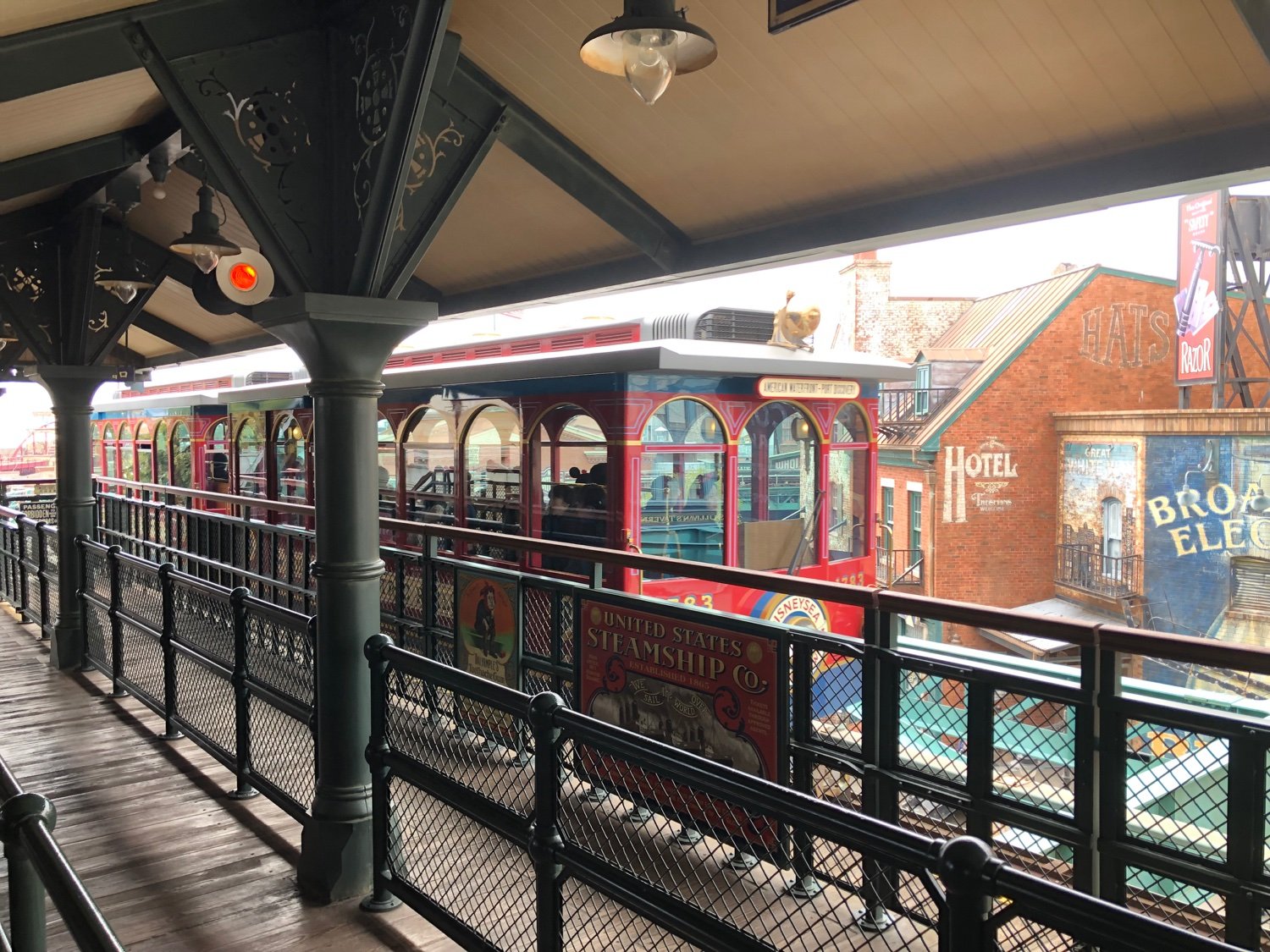 Is the DisneySea Electric Railway an actual train line? Yes. In addition to having two stops which allows the line to be used by park guests to easily get from one side of the park to the other, the line falls under the jurisdiction of Japan's transit authority. Despite being on private land and requiring admission to the park to use, DisneySea Electric Railway must adhere to the same standards as any other public train line. Set #2 arriving at Port Discovery Station:  When Tokyo Disneyland was built and opened in 1983, the Western River Railroad was purposefully designed to have only one stop and run in a loop that sent riders back to where they started to avoid a law that required charging a train fare and that a departure schedule be posted and followed by the line's operators. This decision made it another attraction, rather than a functional line like the Disneyland Railroad in Anaheim. This particular law was abolished in 1987, allowing DisneySea Electric Railway to function as an actual line with destinations without needing to follow those rules. (This is my first attempt at a long form post here, let me know how I did. All pictures are by me unless noted.)

A brand new Sotetsu 20000 Series train set undergoing trial runs at Shinagawa Station in late 2019. This is the 10-car variant that was first introduced in 2018, so this would be one of the later sets built. The distinctive paint color is called "Yokohama Navy Blue", which is featured on other Sotetsu trains. Rear of train: 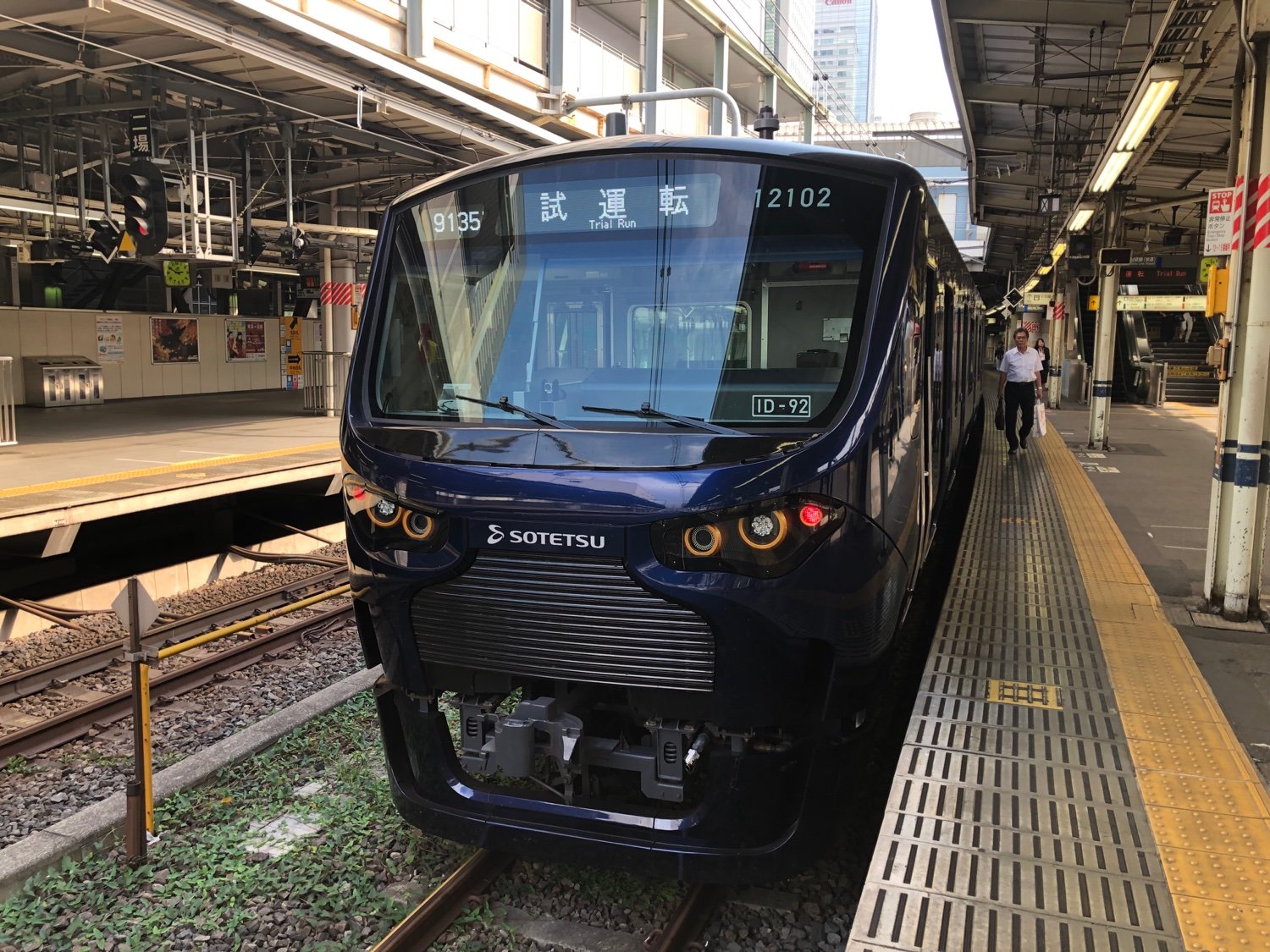 Platform signboard during the train's layover: 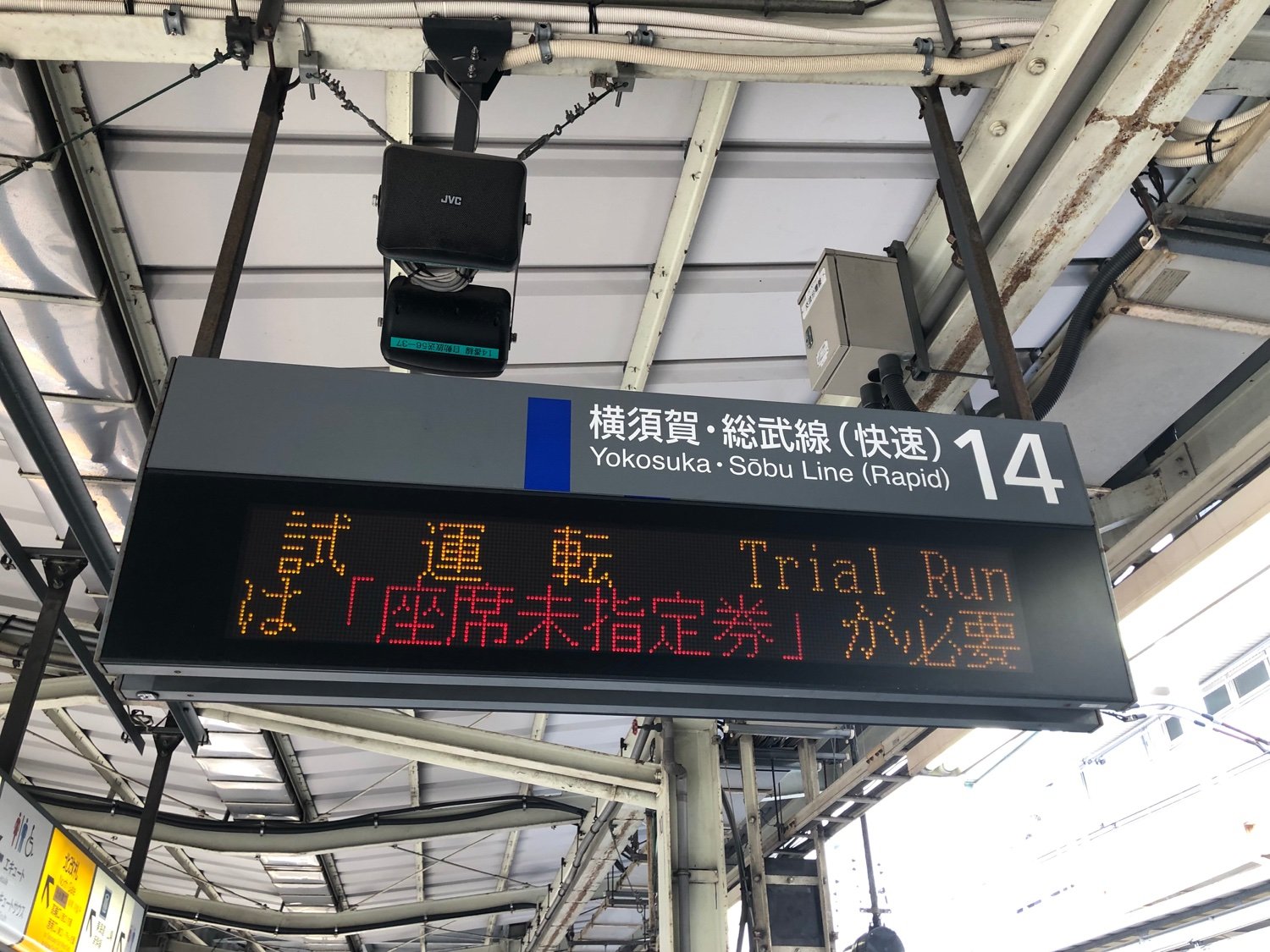

A preserved JNR (JGR) Class 9600 steam locomotive parked outside of Saitama City Hall (engine 39685, built in Japan in 1920). Unfortunately, it was scrapped in 2016 due to maintenance costs.

A Tobu 100 Series Limited Express "Spacia" train stopped at Tochigi Station on the Nikko Line with the unique strawberry pink livery (and custom interior with strawberry patterns on special seats) to celebrate Tochigi's strawberry industry.

Two sets of E217s on the JR Sobu Rapid Line during a rare two-way layover at Tsudanuma Station in May 2020. This picture was taken shortly before JR began phasing the E217s out with E235s.

The newly-christened Light Line in Utsunomiya City, Tochigi. Picture by me.
I like the content in this community a lot and wanted to contribute some. This is a video collection of all the trains I saw on my trip to Kyushu. Loved every single one of them! but my favorites were: - the tilting Sonic 883 with its large windows feels like flying a fighter plane! - the new Kamome, which is so lean & simple compared to other Shinkansen sets - the Kyushu Odan Tokkyu, not just because of the scenic route it takes round Aso, but also because of the wooden finish of so many sufraces, which feels sort of rustic, even though the cars' interiors are very spacious! Use subtitles or timestamps in description for train & location names.

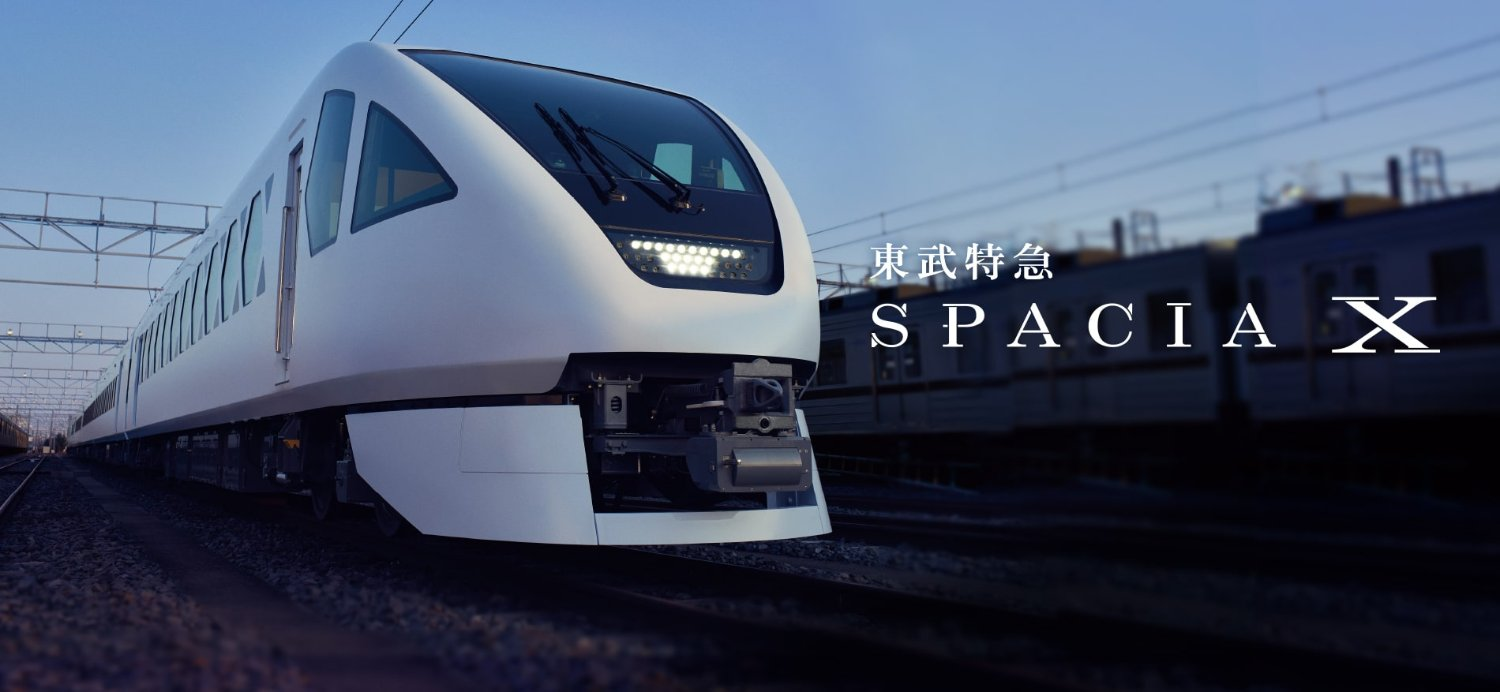 Luxury Sightseeing Limited Express.... I can't afford it. And forget what I post before.

By hijiriunu,[source](https://nitter.poast.org/unu_hijiri/status/1490897098270593024)

Old Japanese vibe, still in operation !  All Meitetsu trains have music horn, pretty special. You may hear it when riding the μSKY Limited Express from Central Japan International Airport.  ::: spoiler spoiler  So powerful that can cover the announcement. I hope the JR lines passengers can still hear what the announcement. :::


Article: https://www.japantimes.co.jp/life/2024/03/16/style-design/on-design-transportation-recycling-boeing/

More info here: https://www.japan-guide.com/blog/raina/180819.html
There are so many YouTubers talking about this. This YouTuber in particular (がみ) apparently managed to ride the first train from Kanazawa: https://www.youtube.com/watch?v=5WVRZLWj6rs This also marks the end of their previous limited express trains, Thunderbird
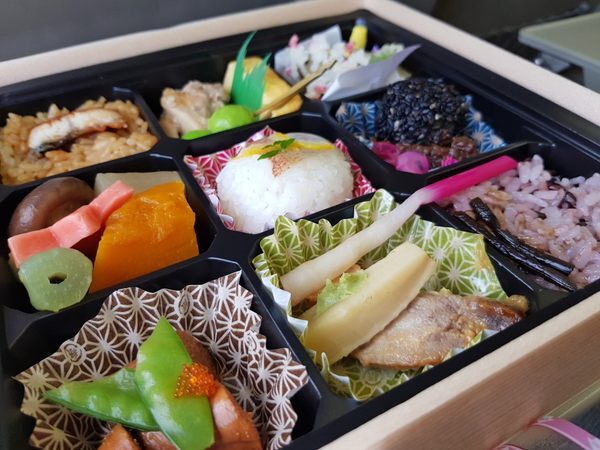 www.atlasobscura.com
www.atlasobscura.com


